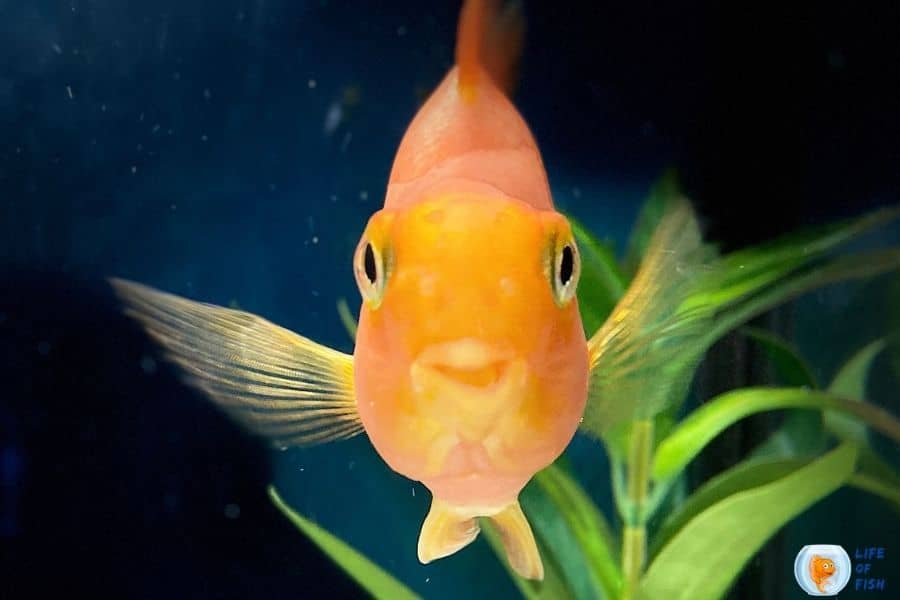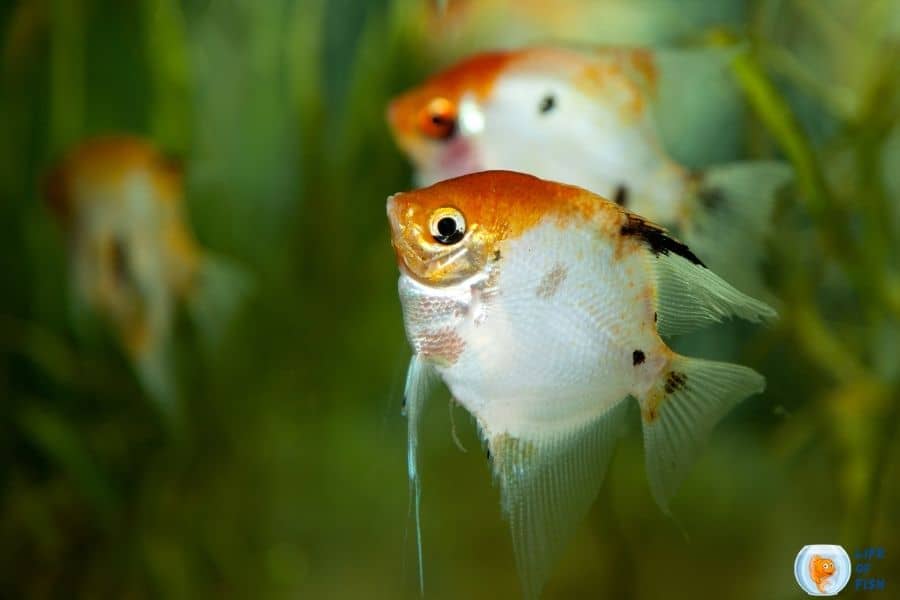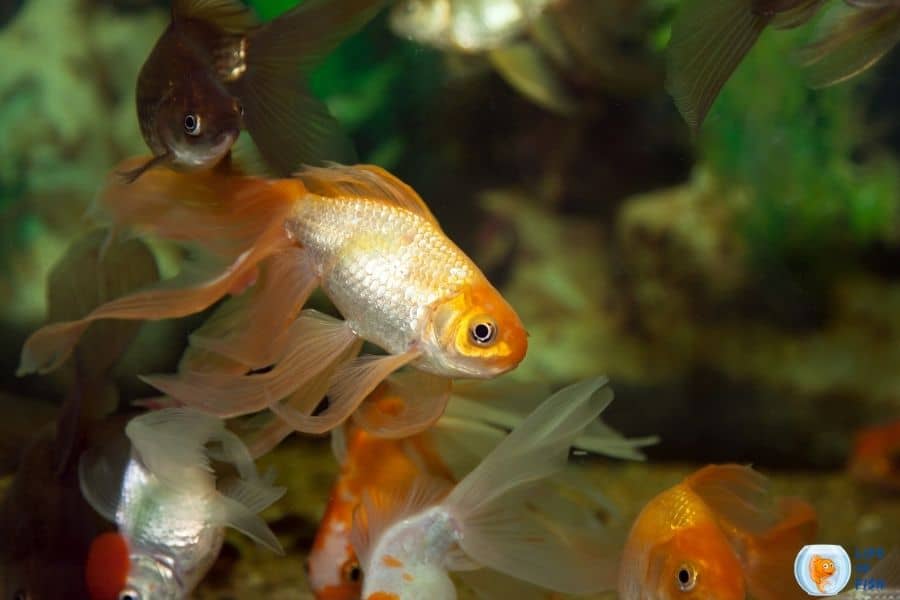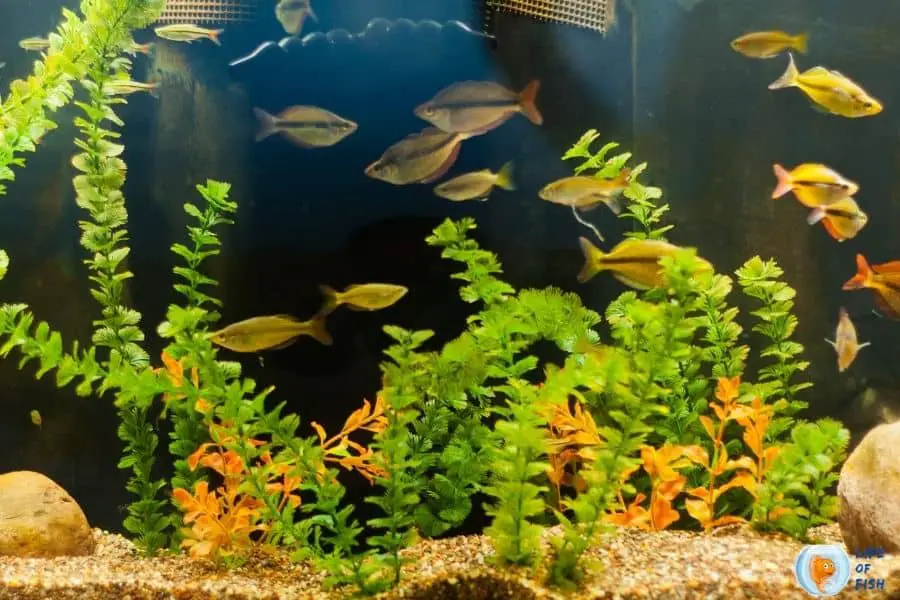Setting up a new tank, cycling it, and introducing your new fish can be a daunting task, especially if you are a beginner. Even after doing all these things correctly, you may have this problem “how to tell if fish are happy in new tank or not”.
We get it because we’ve been there.

How to tell if fish are happy in the new tank?
Jump To
- 1 How to tell if fish are happy in the new tank?
- 2 How long does it take for fish to settle in a new tank?
- 3 How do I settle my fish in a new tank?
- 4 How to tell if fish are happy or sad in the new fish tank?
- 5 Do fish recognize their owner?
- 6 Can fish love their owners?
- 7 How do you tell if your fish is stressed?
- 8 How do you know when fish are hungry?
- 9 How do you tell if fish are dying?
- 10 How to keep your fish healthy and happy in a tank
When your fish are happy, they will show it in several ways. They will swim happily, eat properly, show no fear, and interact with other fish.
Additionally, you can tell them if they are happy just by looking at their body.
While this seems pretty basic stuff to an experienced fish keeper, it can be confusing for a novice. That is why we wrote this article for you.
How long does it take for fish to settle in a new tank?
Some amateurs say that it takes only 15 minutes for the fish to settle in a new fish tank.
But, in fact, it takes about a week for the fish to get used to their new home.
Further, you can not just put your fish into the tank water right away because it will stress out your fish. Before putting them in your tank, you have to acclimate them.
How do I settle my fish in a new tank?
As we said before, to settle your pet fish (freshwater fish or saltwater fish) in a new tank, you have to acclimate them first.
The process of acclimating a fish to a new tank is easy. But, it will take some time. You can acclimate your fish easily by following the below steps.
But keep in mind that before buying your fish, you have to set up your tank water and cycle it in advance.
- Go home as soon as you buy your new pet fish. Do not stay at the pet store for a long time – you will stress out your fish.
- When you arrive home, open up their bag and let them swim around in it for about 15 minutes to get used to the temperature of your house.
- Keep watching how they behave during this period because if they are not well-behaved, then there is something wrong.
- After 15 minutes, dump out the water that is in their bag into your tank. How much you have to pour depends on how big your fish are and what type of fish they are.
- But make sure not to overfill up your tank because it can harm them or cause death.
- Then, put some air bubbles inside the bag so that it will help your fish breathe. For a minute, shake up the bag to mix the old and new water together.
- Afterward, pour small portions of this mixture into your tank. Keep doing this until you have poured out all of their water from the bag into your tank.
- Let them swim around inside the tank for about 30 minutes so they can get used to their new home.
After settling your pet fish in a new tank, you have to observe them for about a week because it takes around a week for fish to get used to your tank.

How to tell if fish are happy or sad in the new fish tank?
In the first few days, any fish that gets introduced to a new fish tank will be stressed out. It takes about one week for them to feel secure and comfortable.
If you see any of the following things after about a week, then your fish are not happy in their new home:
- Your fish is hiding for an extended period of time inside caves or rocks – they feel insecure because it is new to them.
- They will keep swimming at the same spot without moving anywhere else – they do not want to explore their new home.
- They will be floating at the top of your tank and swimming upside down – they feel insecure because it is a new environment for them.
If you see any kind of behavior like that, then you have to take the necessary steps to settle them down.
After a week, your fish will start feeling secure and comfortable in their new tank. Following are some common signs to say you make your fish happy in their new home:
They will start eating well and swim actively around your tank.
Your pet fish will start to be acting like they were before in the pet store. They will explore everything around the tank and begin to eat what you feed them as usual. A healthy, happy fish usually eat as soon as you feed them and eat as much as they can within about 3 minutes. If you see this behavior in your fish, then you can assure them that they are happy.
If there are any other fish inside the tank, they will now be showing no fear of them – they feel comfortable because it is now familiar to them.
Usually, fish in the new tank is shy and anti-social for the first few days. When they get used to their new home, they get used to other fish as well. Therefore, they start to interact with other fish, showing no fear.
You can see that they have grown healthy scales or fins – a sign that you are taking good care of them.
When your fish is healthy, it means your fish is happy with its new home. Shiny and bright scales and fins indicate a healthy fish. If you don’t find any ragged or torn scales or fins, or any white spots on their skin, then you can ensure your fish are doing well in your aquarium.
They will start showing their natural behavior inside your tank – this is a sign that makes fish happy in the environment you have provided for them.
It is natural for some fish types to stay hidden, while some others interact with other fish well. Some fish are aggressive, and some are not. If your fish behave according to their species, that indicates a happy fish in your fish tank.

Do fish recognize their owner?
Surprisingly yes. How?
When you come up to their tank, they can sense your presence. They also know when it is feeding time because of the sound of food hitting the water.
That sound makes fish happy (obviously). They can even feel when someone is coming near with a net.
They are more intelligent than we think! And even science has proved this. Some fish like betta and clownfish can even recognize the face of their owner.
Some advanced fish like goldfish and koi even interact with their owner. They play, ask for food and even get petted.
Can fish love their owners?
Several pieces of research have proved that fish have emotions.
Once a Portuguese researcher taught sea bream in both favorable and unfavorable situations, which were anticipated to trigger an emotional response.
They next examined this emotional reaction by monitoring cortisol levels (a stress hormone) and observing which brain areas became active.
Researchers also observed fish interaction and overall behavior in order to gauge their reaction and then trace it back to emotional states.
With this study, they could confirm that fish have emotions. If they have emotions and can recognize their owner, then why not love their owners?
How do you tell if your fish is stressed?
You can tell if your pet fish is stressed by checking out their behavior.
- When they are stressed, fish can’t produce enough mucus to protect themselves from infection and diseases.
- When your fish has stress, you will see that it has difficulty breathing because of the lack of mucus in its respiratory system.
- Fish will develop diseases like Ich and other parasitic and bacterial infections and eventually become unhealthy.
- They also develop odd swimming patterns. Fish will swim frantically in the same spot, crash on the bottom, rub themselves on the substrate and glass surface, or lock their fins at their side.
- They also lose their appetite and refuse feedings.
- Fish are usually more active during the day, but stressed fish are nocturnal.
- They will swim around at random and rest in different places than usual – all of which is a sign that your fish isn’t happy with its new home environment.
- One of the most common signs that you have stressed out fish is if they start nipping at other fish.
- While some nipping is normal, if it becomes more aggressive and frequent, then that’s a sign of stress in your tank.
- When stressed out, they can get fin rot or torn gills; these are signs of physical damage due to the mental trauma, which causes them harm – showing how much stress affects their health negatively.
If you find any signs like this for more than a day – take immediate steps to reduce stress levels.

How do you know when fish are hungry?
Many fish types are opportunistic feeders. So, they are hungry at any time and eat whenever they find any food.
They spit out the extra food when they eat enough, which happens within 3 to 5 minutes in an aquarium.
Some fish even developed a habit to “beg” for food when the owner is nearby. But this “begging” is not because they are hungry.
This is because they are evolved to eat as much as they can whenever they get food. So, we do not recommend frequent feeding.
Do not overfeed your fish because this can lead to serious health problems like swim bladder disorder which is very common with goldfish and betta.
As experts recommend, about two feedings per day is more than enough for your fish.
So, instead of feeding your fish whenever they ask for food, feed them with recommended frequency. That is more than enough for your fish.
How do you tell if fish are dying?
Most of the time, your sick fish may show a few signs of death before the actual event.
This includes lying at the bottom, red or swollen gills, fish not moving as much as usual, and nipping other fish too often.
Fish will also stay in one spot even though they usually explore your tank. If your fish is not old enough, it will most likely be a disease that causes them to die.
Therefore, it is always better to remove any dead or dying to prevent them from spreading disease and harming other healthy fish.
You do not want to touch the fish or disturb them unnecessarily because it can cause stress.
You should contact a pet store for advice on removing the dead fish without harming your other ones.
If you see these signs, take some time during their feeding time and spend more time with them so that they know that you are there for them that will make your fish happy.
How to keep your fish healthy and happy in a tank
Keeping your fish happy can be hefty of work if it is hard to care for fish. The most critical factor in keeping happy fish is to provide clean water conditions in your tank.
You can use RO/DI water with the necessary minerals added to give the best water conditions.
Additionally, you have to change at least 25% of water weekly or bi-weekly. You will also have to clean the tank by vacuuming fish debris regularly.
Apart from that, provide a balanced diet and treat your fish if you notice any infections ASAP.
Although it is not necessary, you can provide live plants and decorations in your tank to make your tank mimic its natural environment.
By doing all these stuff, you can ensure that you have a happy fish in your aquarium.
Read Next: In 10 Minutes, I’ll Explain Everything About Dwarf Rainbow Fish Care
